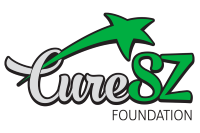
Jonathan M. Meyer, M.D. Clinical Professor of Psychiatry at the University of California, San Diego Psychopharmacology Consultant for the California Department of State Hospitals, CURESZ Board Member
Removing Barriers to Clozapine Use
Clozapine is the only effective medication for treatment resistant schizophrenia, with response rates ≥ 40% compared to < 5% for other antipsychotics.1 Despite this, clozapine is significantly underutilized with up to 8-fold variation in rates of clozapine use between states in the United States.2 The main barriers to clozapine use in the United States rest on two issues: the burdens of monitoring and prescriber fear.3
These two issues are intertwined and relate to the association between clozapine use and serious decreases in infection fighting cells (i.e. neutrophils) in 1% of patients. Clozapine’s U.S. approval (1989) came with mandatory monitoring to track neutrophil (white blood cell) counts: weekly for 6 months, every 2 weeks for the next 6 months, and monthly thereafter. While this monitoring has nearly eliminated infection-related fatalities from clozapine-induced neutropenia (a low white blood cell count), the fear which this and other unusual adverse effects created dissuades many clinicians from using clozapine or from learning how to use clozapine. Although data indicate that clozapine use lowers mortality,4 many clinicians overestimate the risks of treatment and, sadly, subject patients to multiple trials of other agents with little chance of therapeutic benefit. Mandatory monitoring has vastly improved safety, yet it poses a number of difficulties for patients: travel costs, time, possible need for assistance to travel, discomfort from the blood draw, concerns among some about uses of their specimen, and the impact of delays in receiving the next prescription. Clozapine dispensing is tightly tied to pharmacy notification of blood results, and the quantity dispensed matches the interval to the next blood draw. For those on weekly testing, a delay of 24 hours in going to the lab or transmitting lab results places the patient in jeopardy of running out of clozapine.
Yet, there is hope. In the state hospital system I consult with, a regular lecture series on clozapine increased prescribing more than two-fold. Moreover, healthcare systems in New York and the Netherlands showed that supporting prescribers facilitates greater clozapine use. Knowledge is indeed power, and clinicians in the United States have two new resources to facilitate clozapine prescribing. One is a handbook that I co-authored inspired by the lack of clinically oriented published resources on clozapine;1 the other is a web-based educational site that (importantly) also provides clinical consultations to registered users (https://smiadviser.org). This initiative is free, and is sponsored by the American Psychiatric Association and the Substance Abuse and Mental Health Services Administration.
For patients, monitoring burdens may be lessened by a newly approved point-of-care (POC) device that uses a small drop of blood from a finger stick. The first of these devices (http://athelas.com) not only provides results within minutes, the results are automatically transmitted to the monitoring system, and the device is now FDA approved for home use. The discomfort is less, there is no risk of delay between obtaining the results and medication dispensing, and the patient sees exactly how their blood specimen is used. The lack of delay means that a patient can have the test done anytime, and in almost any setting with trained personnel.
The clozapine renaissance has begun.
References:
1. Meyer JM, Stahl SM. The Clozapine Handbook. New York, NY: Cambridge University Press; 2019.
2. Stroup TS, Gerhard T, Crystal S, Huang C, Olfson M. Geographic and clinical variation in clozapine use in the United States. Psychiatr Serv 2014;65:186-92.
3. Cohen D. Prescribers fear as a major side-effect of clozapine. Acta Psychiatr Scand 2014;130:154-5.
4. Vermeulen JM, van Rooijen G, van de Kerkhof MPJ, Sutterland AL, Correll CU, de Haan L. Clozapine and long-term mortality risk in patients with schizophrenia: a systematic review and meta-analysis of studies lasting 1.1–12.5 years. Schizophrenia Bulletin 2019;45:315-29.

